THE CAPE FEAR RIVER BLUEPRINT COASTAL RESTORATION ACTION PLAN
A VISION FOR THE LOWER ESTUARY
ABOUT THE BLUEPRINT
After the Titan fight and the Federation’s efforts to improve the Special Use Permit for NHC, we recognized while a lot of efforts from other groups have been and continued to focus on the upper river and the NE Cape Fear through land acquisition and the Cape Fear River Partnership for Migratory Fish Passage, there was not a lot of focus on the lower estuary except for some specific research at UNCW and our work at CBSP (which was part of the catalyst for this more concentrated effort).
Funding for the Blueprint was secured through a grant from the Moore Foundation and the Lillian Goldman Charitable Trust last February. We put together a working group that consists of Federation staff, DMF, UNCW, NC Audubon, retired DEQ staff and identified these issues the Blueprint will address. Staff begin work on the blueprint in Feb. and continue to develop the plan. Overall coordination of the plan Mike’s while Ted and I concentrate on the specific project goals including oysters (Ted) Living shorelines/stormwater and Invasives (me) and water quality reclassification and writing the draft plan is on Mike and a graduate fellow Britt Sheinbaum.
Issues the Blueprint will address:
Sea Level Rise-Shoreline Erosion
Loss of Natural Coastal Habitats-Wetlands and Forested Riparian Shorelines
Water Quality Issues and Degradation
Polluted Stormwater
Degradation and Loss of Shellfish Habitat
Invasive Species-Phragmities
Rookery Island Restoration and Protection
BLUEPRINT GOALS
The federation is working with Mariko Polk and a team from Dr. Devon Eulie’s program in development of modeling that will identify site specific projects for stormwater retrofits and for the development of the Watershed Restoration Plan. Initial identification of potential retrofit sites is complete and now the working group will identify the low-hanging fruit for stormwater projects on public lands first and then on private lands with willing landowners. Mike is working with retired water quality supervisor at DEQ, Rick Shiver, and Jeff Manning at DWR on the potential to submit a request for water quality reclassifications from SC to SB around Carolina Beach State Park and with Shellfish Sanitation and DWR for expansion of SA waters to be open for harvest.
Water Quality
The federation is working with Mariko Polk and a team from Dr. Devon Eulie’s program in development of modeling that will identify site specific projects for stormwater retrofits and for the development of the Watershed Restoration Plan. Initial identification of potential retrofit sites is complete and now the working group will identify the low-hanging fruit for stormwater projects on public lands first and then on private lands with willing landowners. Mike is working with retired water quality supervisor at DEQ, Rick Shiver, and Jeff Manning at DWR on the potential to submit a request for water quality reclassifications from SC to SB around Carolina Beach State Park and with Shellfish Sanitation and DWR for expansion of SA waters to be open for harvest.
- Propose Reclassification of section from SC to SB.
- Protect SA waters and investigate reopening of closed waters.
- Develop Watershed Restoration plan for selected sub-watersheds.
- Identify retrofit projects to protect and restore water quality.
- Development of a SLAM model (Sea Level Affects Marshes)
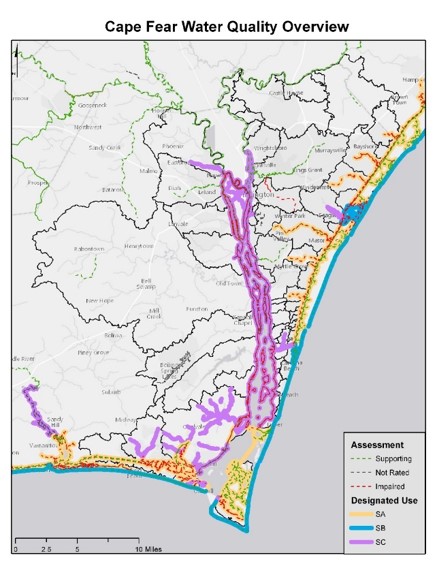

Oysters
The loss of habitat for shellfish is alarming and the Federation along with UNCW and DMF have been working for several years to address small site specific projects to gauge the effectiveness and viability of oyster restoration in the lower Cape Fear. The Blueprint goals include: Development of Sanctuary Cultch sites, development of a shellfish enterprise zone. These goals and potential projects are being developed with cooperation from UNCW and DMF which include ongoing research and modeling to identify appropriate viable sites for restoration projects.
- Development of a Shellfish Enterprise Zone within “approved” waters.
- Develop Sanctuary/Clutch sites in “approved” waters or nearby.
- Secure appropriate “Stockpile” sites for shellfish bed restoration projects and long-term aquaculture program.
- Prioritize oyster investments and projects that will maximize wildlife co-benefits, including protecting habitat and providing food sources for birds and other wildlife.




Living Shorelines
Dr. Devon Eulie and our Watershed specialist Mariko Polk are working on modeling the shoreline changes and erosion hotspots which will be key components of the watershed characterization Mariko is developing. The characterization is being used by the working group to identify potential restoration projects.
- Working with UNCW Dr. Devon Eulie and Mariko Polk at UNCW to map and model shoreline changes and identify sites for living shoreline projects and treatments.
- Shoreline modeling and mapping is complete and that information will be utilized by Mariko in the water characterization modeling and SLAM modeling.
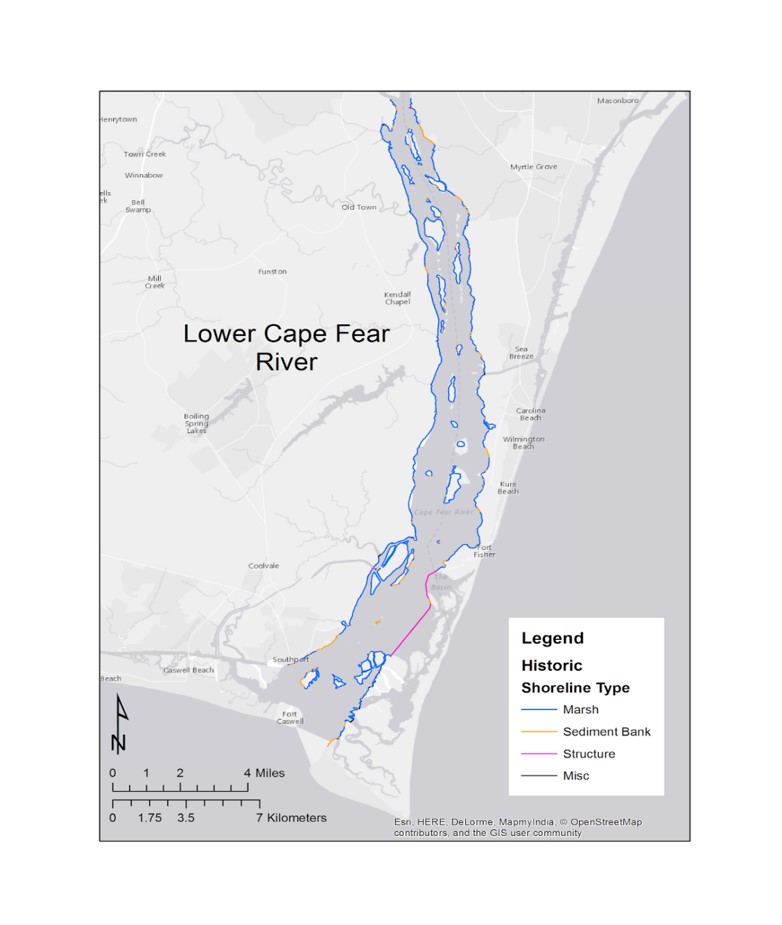
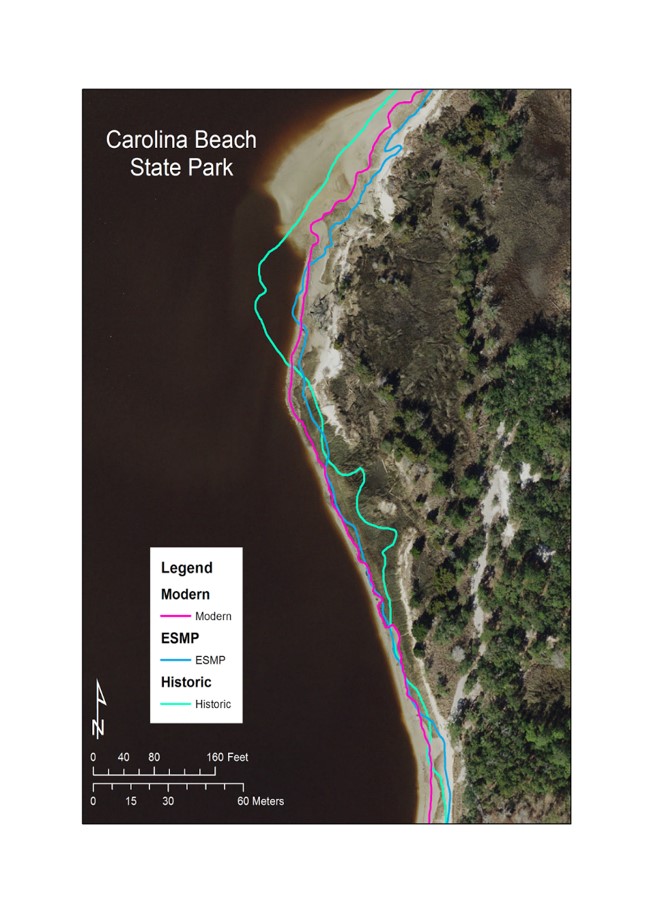
These maps are key components of the SLAM model (Sea Level Affecting Marshes) we will use to identify restoration projects as well as to educate the public on the effects of climate change upon the lower estuary and to support the project to improve the resiliency of the lower Cape Fear to climate change as well as development pressures and the importance of a vibrant and resilient natural environment.


Rookery Island Protection and Restoration
Oyster Reefs & Living Shorelines
Working with Audubon, UNCW and the state Division of Marine Fisheries the important rookery islands for birds in the lower Cape Fear will be targeted for development of living shorelines and oyster reefs to combat the erosion and potential loss of these habitats which are nationally important.
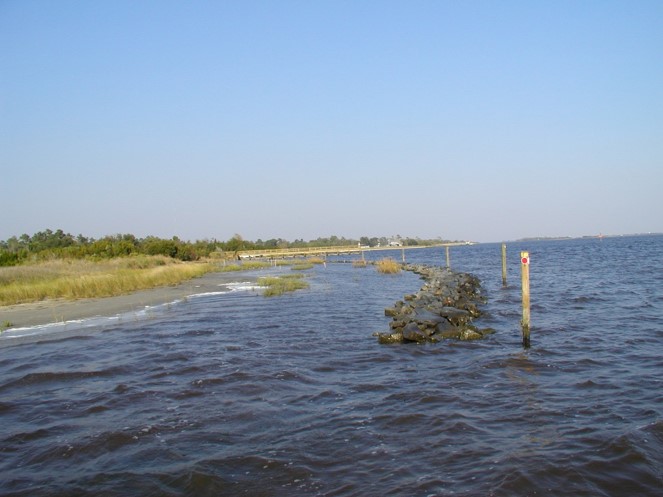
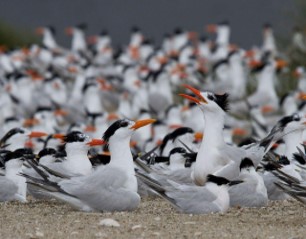
NEXT STEPS / ACTION
- Ongoing- Final Draft Blueprint Plan
- Identification of potential oyster projects-Ongoing with Troy Alphin at UNCW
- Identification of potential Living Shoreline and stormwater retrofit projects
- Water Reclassification Request-Work with Jeff Manning at DWR to draft request-Spring 2018
- Development of Watershed Restoration Plans
- Blueprint Plan Public Unveiling: Spring 2018 UNCW Marine Science Center
- Development of Professional Video of the Lower Cape Fear Estuary and the Blueprint: Tom Earnhardt, board member: Exploring North Carolina
- Outreach Opportunities: Public Presentations to local governments, organizations, distribution of video to local media, work on stormwater and oyster projects as they are funded and implemented.





